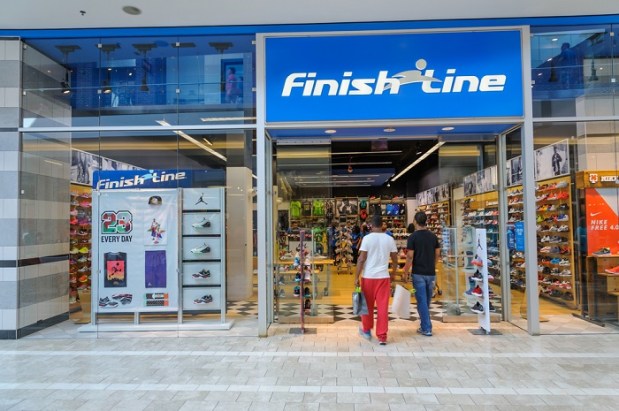Finish Line Shows How Warehousing Goes Wrong

If anyone out there is still looking for signs of how accelerated just about every timeline has become in the modern retail world, look no further than what Glenn Lyon, the newly removed ex-chairman and CEO of Finish Line, said about his company’s 2016 Q2 performance.
“We are pleased with the bottom line performance we achieved on modest sales growth,” Lyon said in a statement in September. “With our new supply chain system now live, we have accomplished a critical milestone which elevates our customer service levels even higher, while driving efficiencies throughout our organization. The combination of our enhanced infrastructure and strong vendor partnerships has us well-positioned to deliver the latest and greatest merchandise assortments our customers will be looking for this holiday season and beyond.”
Fast forward to Friday (Jan. 8) and not only is Lyon being removed from his post as CEO of Finish Line, but the company is citing dramatic supply chain errors as a key component of the move. The Wall Street Journal reported that the fitness apparel and supplies retailer had been transitioning over to a new warehouse system throughout 2015, and while sales remained strong from quarter to quarter, the unfamiliar supply chain processes caused orders from stores for stock and purchases from customers online to hang in the system. While online shoppers had to wait longer for their orders or canceled them outright, Finish Line’s 600 brick-and-mortar storefronts also saw their shelves barer and barer as new inventory failed to move from its place in some distant fulfillment center.
These errors took a serious toll on Finish Line’s bottom line. The retailer lost a combined $21.8 million in the last quarter, compared to a $2.6 million gain during the same period in 2014. Overall revenue dipped 3.5 percent to $328.1 million, and the company has readjusted its predictions for its numbers as its fiscal year wraps up in February — down to somewhere between $1.18 and $1.23, a far cry from analysts’ estimates of $1.74.
Though Lyon isn’t expected to vacate his post until the end of February, WSJ explained that Finish Line has, at the very least, been quick to right its supply chain wrongs. In addition to bringing in third-party consultants to get its warehousing operations back in order, the retailer plans on shuttering approximately 150 stores by 2020 to adjust to its new market position. Most of these storefronts will be low-performing ones that rake in less than $1 million in annual sales — the average store pulling in more than double that.
Despite the doom and gloom that surrounds store-closing announcements like these, Finish Line CFO Edward Wilhelm remained optimistic on a Thursday (Jan. 7) earnings call.
“We fully expect to recapture a portion of the approximately $150 million in annual sales these stores generate through increased traffic and volumes at nearby locations and on our digital sites,” Wilhelm said, as quoted by BuzzFeed.
However, there’s always the chance that the retailer’s supply chain woes have put it behind an eight ball that its product line stands no chance catching up with. Neil Schwartz, vice president of business development at sports retail tracker SportsOneSource, told WSJ that Finish Line, a retailer that has oriented itself toward the high-grade, performance-level products favored by professional athletes, has been struggling against a more casual market segment for years.
“One of the main underlying factors is that we are in a deep athleisure trend,” Schwartz said. “They made a big bet the other way with performance. And now, they have issues.”
As good supply chain stewardship becomes gravely important in a scaling omnicommerce world, it’s unlikely that Finish Line will remain the only retailer sabotaged by its own practices for long.
